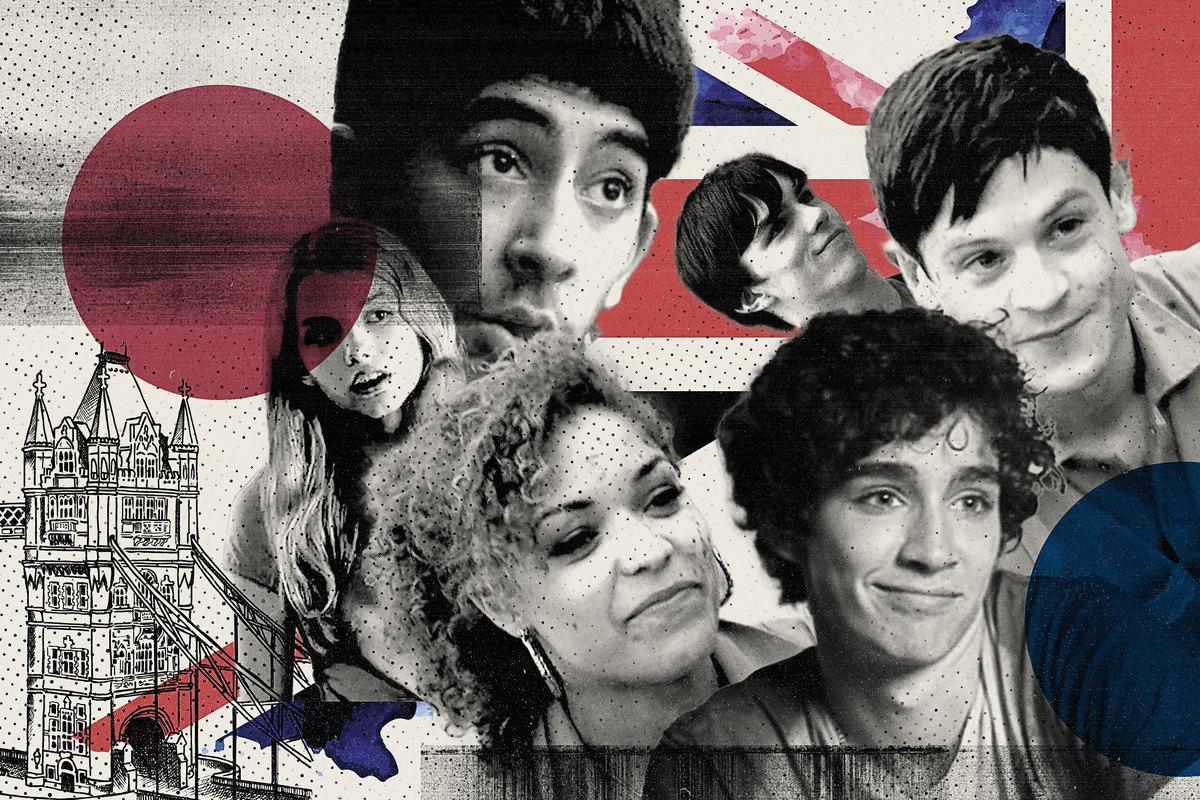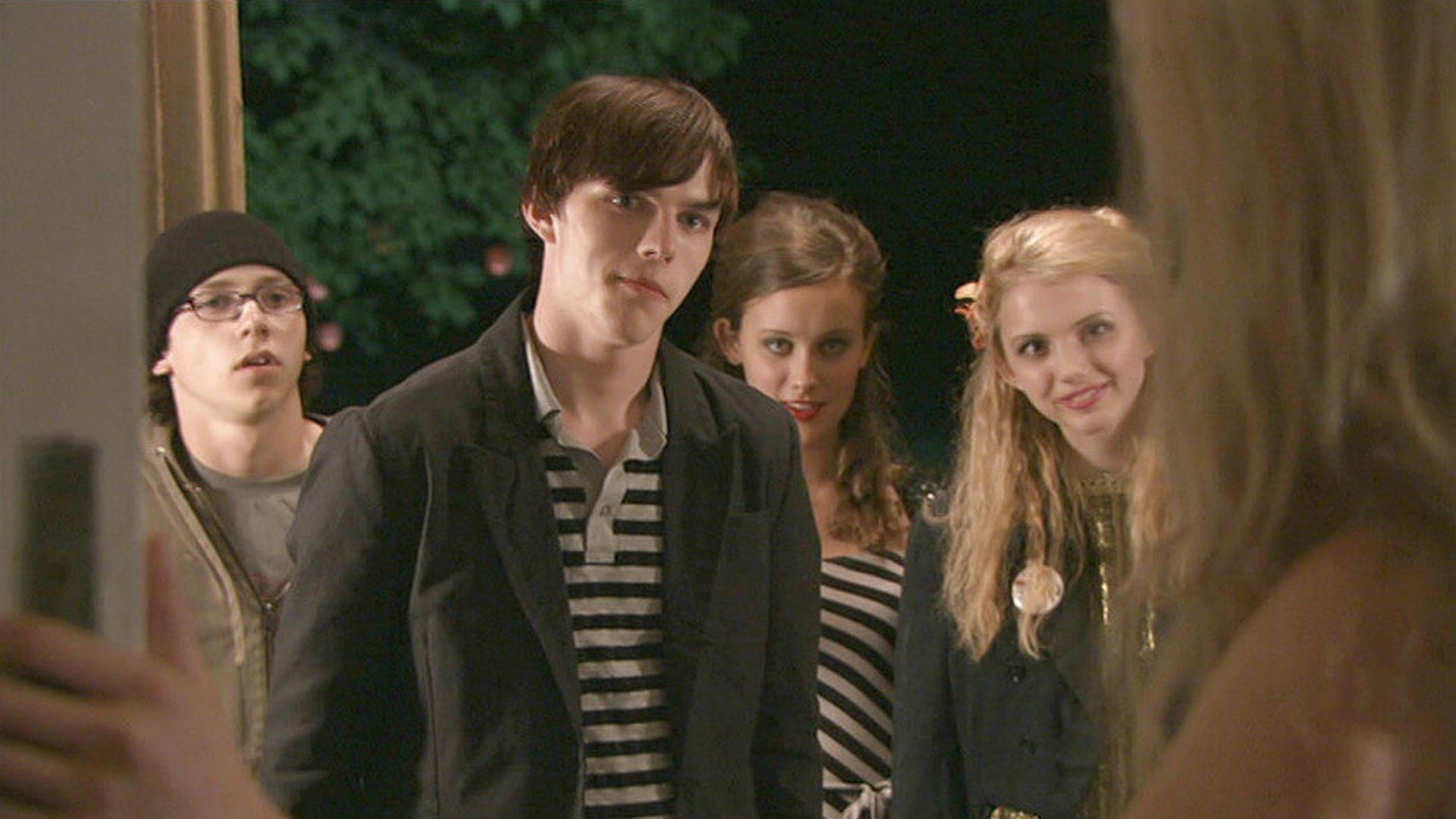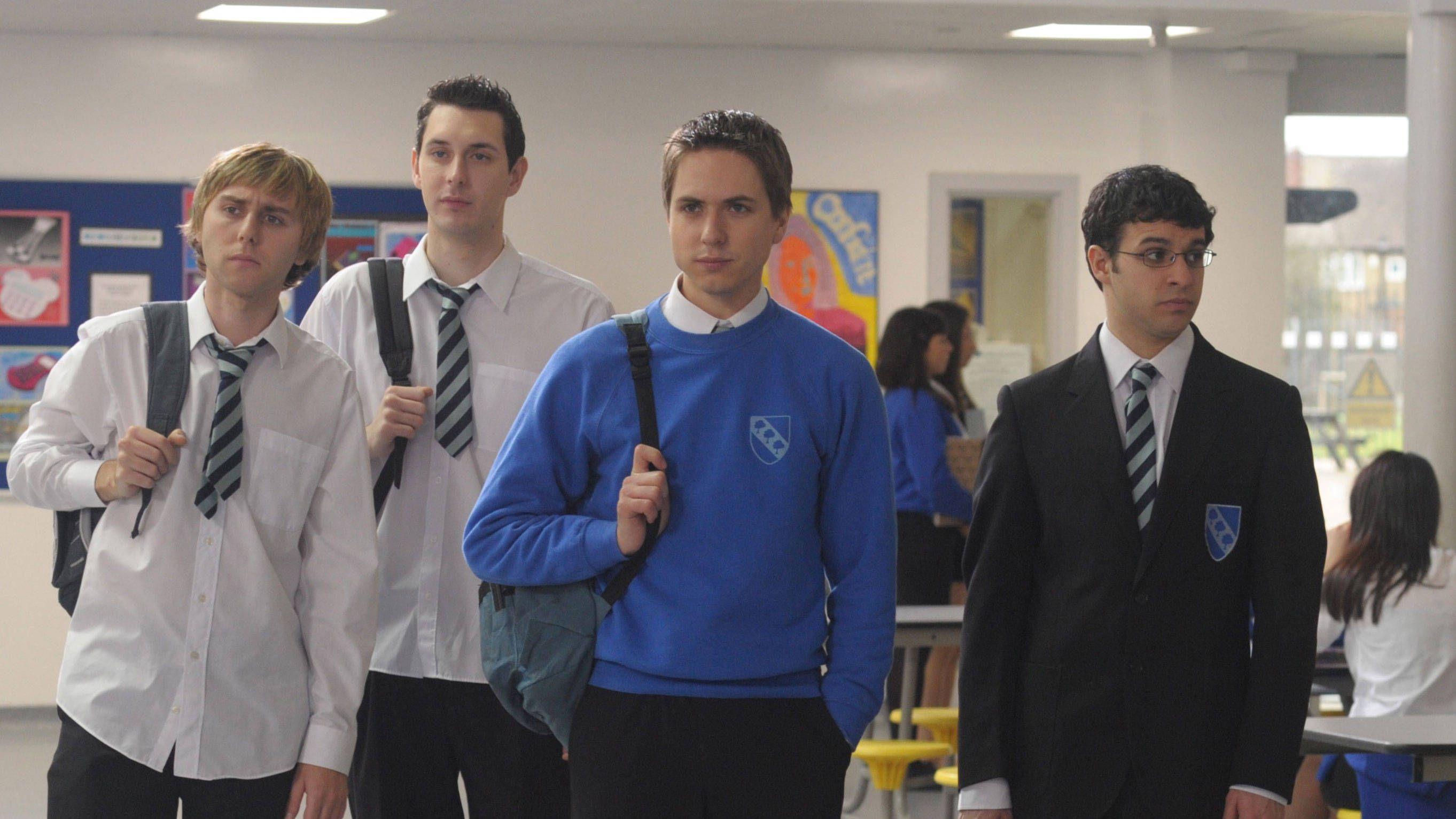
One hundred years ago this week, the company that would become known as the British Broadcasting Corporation was founded in London. Transmitting news and entertainment across radio and television, the BBC would go on to have a far-reaching impact on not only the United Kingdom, but also audiences worldwide. To mark the anniversary, The Ringer is celebrating one of the BBC’s chief exports to the United States: British TV. From Masterpiece Theatre to Love Island, join us as we look back on some of the iconic shows that have crossed the pond in the past century.
As the world became increasingly globalized following the turn of the millennium, the pop cultural exchange across oceans was becoming more immediate and distinctive. New technology allowed for media to be accessed far easier, and almost instantaneously, too. For a certain type of American teenager coming of age during the mid-2000s, this meant one thing: We were watching a lot of British telly.
It might seem odd to think about it now, with The Crown and Downton Abbey making it a yearly tradition to gobble up Emmys, but there was a time when British television, for Americans, had a foggy sort of mystique. More conventional shows on the cusp of becoming era-defining phenomena (The Office, Doctor Who) were just starting to cross the Atlantic. If you and your family were into Blackadder or Absolutely Fabulous or Monty Python’s Flying Circus, it meant, in a mildly intimidating way, that you had taste—and an imported set of DVDs in the cabinet under your TV.
The millennials who count this decade as their teenage years were present for a major shift in youth-focused entertainment. In America, the 2000s brought us shows like The O.C., Gossip Girl, and One Tree Hill—shows for kids that felt like shows for adults. Elsewhere, the Canadian high school soap Degrassi: The Next Generation made for good drama, but like these American shows, often followed characters from rich private schools and wealthy neighborhoods, diminishing a level of relatability. These series were broadcast on traditional television networks, but with newly ubiquitous access to the internet, suddenly you could find strange, alluring series that weren’t available on American TV. And where did we turn? East, of course, to an island tiny in size but enormous in culture, with a budding crop of teen-oriented shows that were destined to become more than just a string of cult curiosities.
No doubt the most famous of these is Skins, which ran on E4 from 2007-2013 and redefined not only a genre, but an era of television geared toward young adults. The use of explicit sexual language and profanity may seem commonplace in teen television today, but at the time of Skins, it was radical. So was the frank manner in which Skins explored the social and emotional challenges of adolescence, to which shows like Euphoria and 13 Reasons Why no doubt owe a debt. Focusing on groups of teenagers living in a suburb of Bristol, England (a new cast took over every two years), Skins portrays life as a teen in the modern age without the blinders of censorship. It was a show about The Issues, which made it riveting: individual episodes (titled after whichever character in the group it was following for that hour) dramatized everything from adolescent sexuality to drug abuse to pregnancy, divorce, eating disorders, death, love, and religion. Along the way, the early seasons of Skins managed to introduce a new generation of stars soon to become household names: Nicholas Hoult, Kaya Scodelario, Daniel Kaluuya, Dev Patel, and Game of Thrones stars Joe Dempsie and Hannah Murray.

Skins was a snapshot of an infinitesimally small period of time before the digital age was really the digital age: characters ogle photos of their crushes on grainy flip-phone screens, accidentally start slapstick he-said-she-said misinformation plots with cryptic texts, have conversations over the phone with friends and crushes long into the night. The first episode of Series 2 premiered in multiple parts via MySpace. The show defies classic genre constraints, at times a slice-of-life drama, an absurdist comedy, a tragedy, a fable, and sometimes a fairy tale. More than anything, though, Skins felt real amidst a television landscape full of teen shows that were anything but, peeling back the fuzzy cocoon of teen sitcoms to portray, often controversially, the realities of what the youth dealt with at the dawn of the new millennium.
In contrast to Skins’ daring approach to portraying the bleaker, grittier reality of being a teen, coming-of-age cringe sitcom The Inbetweeners, which ran from 2008-2010, followed a group of characters who were, in essence, a disastrous bunch of sexually repressed schoolboys. Protagonist and narrator Will McKenzie (Simon Bird) has transferred from a private school to Rudge Park Comprehensive, where he falls in with a trio of social outcasts: hot-headed Simon (Joe Thomas), sex-obsessed compulsive liar Jay (James Buckley), and gentle Neil (Blake Harrison), who are hounded at every turn by their terrifying and authoritarian teacher Mr. Gilbert (Greg Davies).
Where Skins found the drama in down-to-earth realism, The Inbetweeners was the farcical version of being an adolescent. Moving with a manic pace, the series used the sardonic wit of Will’s voiceover narration to observe the absurdity of it all. Field trips end in disaster (and often various states of nudity), quests for party drugs end in humiliation, and one memorable school test day ends in an unfortunate energy-drink-fueled accident mid-exam. To say that a lot of the humor has not aged well is an understatement, but once you’re in, it’s difficult not to find something to love about these idiots.

And for the true weirdos, there was Misfits. Broadcast at the turn of the decade from 2009-2013, Misfits took the existing formula of an edgy teen drama and injected it with a little bit of the superhero fever that was just beginning to take the culture by storm. The show centers on a group of juvenile offenders serving a community service sentence at a detention center who suddenly develop superpowers after getting struck by lightning. The classic superhero origin story is turned inside out by the show’s very premise, which asks what would happen if supernatural abilities were granted to the people who, through their misdeeds and their youth, found themselves on the fringe of society. What would it take for a bunch of delinquents to accept their accidental destiny as heroes?
With powers that fit alongside each character’s personality—promiscuous Alisha (Antonia Thomas) sends people into a sexual frenzy with just a touch; Curtis (Nathan Stewart-Jarrett), ashamed of his past, can turn back time; shy Simon (Iwan Rheon) can become invisible—Misfits deployed familiar sci-fi tropes to enhance its more grounded drama. Characters have (often doomed) relationships, explore their sexualities, deal with tough home situations, examine the very British obsession with class (if you didn’t learn the word “chav” from Doctor Who, you learned it from Misfits), and alter timelines so that they never broke up with their ex-girlfriends. You know, stuff we all do. Amid the everyday grunge are moments of reckless beauty—at the end of the first season, Nathan (Robert Sheehan) gives a rousing speech on a rooftop to a group of teens brainwashed into beige conservatism by a cult-like organization called Virtue, screaming, “We fucked up bigger and better than any generation that came before us! We were so beautiful!”
At this point in time, our generation was just starting to use the word “millennial” to describe ourselves as a collective bound together by the turn of the century’s trial by fire: the Great Recession, the housing crisis, student debt, inflation, post-9/11 xenophobia, a foreign forever war, social media toxicity, an endless string of articles about how we were “killing” casual dining, alcohol, houses, cars, diamonds, designer clothes, and everything else we could no longer afford. Who did we have left to turn to but ourselves? Not just ourselves, but the grimy, sticky, anxious, cruel, strung-out, desperate versions of ourselves we actually recognized.
These three shows gifted millennial teens a wealth of entertainment that never told us to be anything but what we were. They existed at a cultural turning point: during the last few years before the primacy of social media took over, before the algorithm had the audacity to tell us what we want to look at. This was before streaming, so the ways in which American teens accessed these shows constituted another type of rebellion: uploaded in multiple-part, 10-minute YouTube video playlists or downloaded from sketchy links on LiveJournal in the early morning hours. No one wanted to be the schmuck waiting for BBC America to start airing the new season months after it had ended across the pond.
The best thing about them all is that they felt grungy, gross, and real. Being a teenager is terrible. It’s a mess. You’re having fun, but you’re anxious about when it’s going to end. Adulthood, and the emotions that come with it, seems too big to grasp with a simple human mind. College and jobs are looming, and responsibility is heavy on our shoulders. But there was comfort, for those of us willing to seek it out, in the British TV that told us that messy, imperfect, and strange is exactly what we ought to be.
Emma Stefansky is a writer based in New York City who covers television, film, and books. Her work can be found in Vanity Fair, GQ, IndieWire, and Thrillist. Follow her on Twitter @stefabsky.